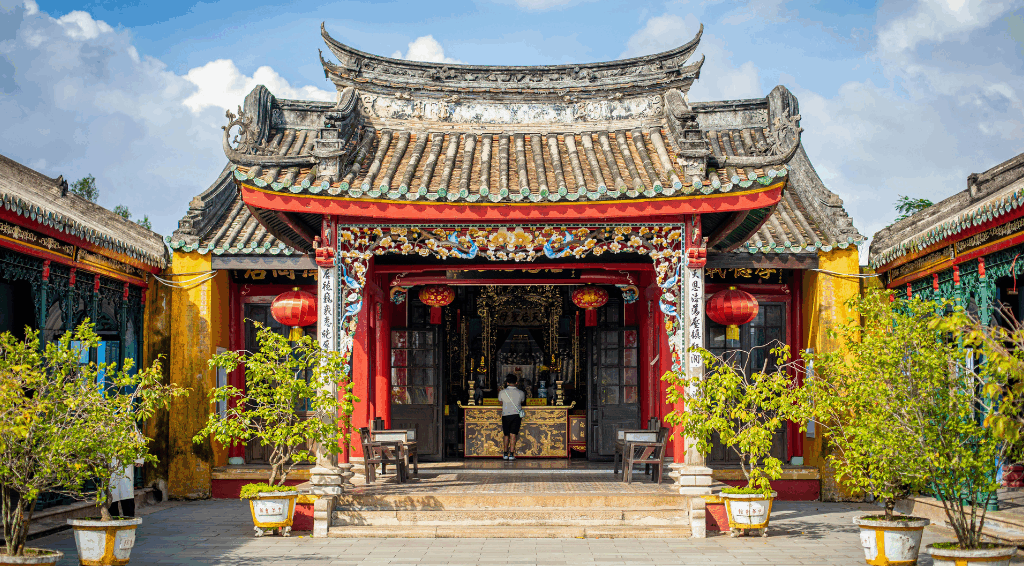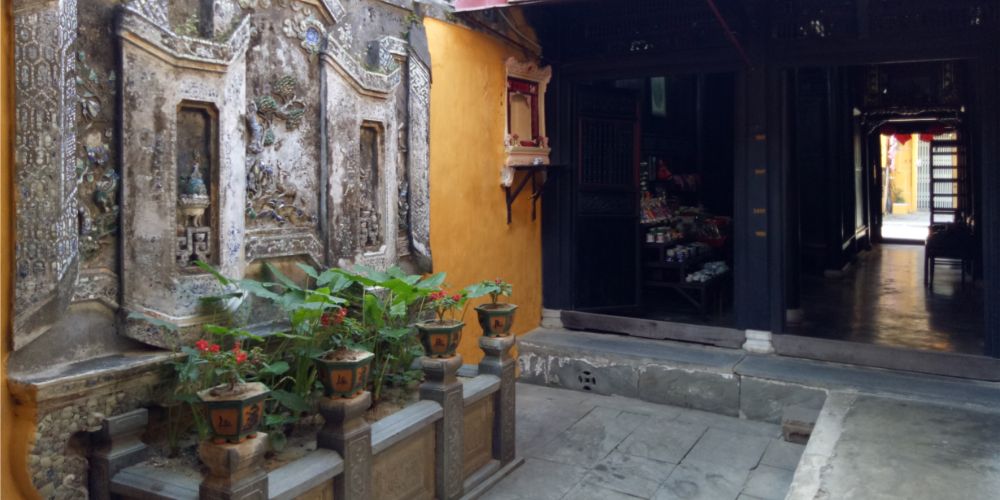
Vietnam is a land where history and culture intertwine with daily life, and nowhere is this more evident than in its ancient towns of Hoi An and Hanoi. These cities, steeped in centuries-old traditions, are celebrated for their well-preserved architecture and rich cultural heritage. Among the many distinctive features found within the homes of these cities, the giếng trời, or skylight courtyard, stands out as a symbol of harmony between nature, spirituality, and human habitation. This architectural element is not only a practical solution to the challenges of urban living but also embodies deep-rooted philosophies of feng shui, making it a fascinating subject for both cultural enthusiasts and travelers seeking authentic Vietnamese experiences.
In the narrow, tube-shaped houses characteristic of Hanoi’s Old Quarter and Hoi An’s ancient streets, space is often limited in width but extended in depth. This unique spatial arrangement has inspired the incorporation of a giếng trời—a vertical open space in the middle or rear of the house that allows natural light and fresh air to penetrate deep into the interior. This design counters the darkness and poor ventilation typical of densely built urban homes, improving the living conditions dramatically.
Functionally, the giếng trời acts as the lungs of the house. By opening a direct path to the sky, it facilitates airflow and creates a microclimate that cools the home naturally. It also introduces sunlight that reduces dampness and mold, common problems in humid tropical climates. But beyond these practical aspects, the giếng trời transforms a simple house into a living space imbued with life and energy.

Credit: Do Thi Co Hoi An
In Vietnamese culture, which is heavily influenced by Chinese geomancy, the concept of feng shui (phong thủy) plays a vital role in architecture and daily life. The giếng trời is often called the “thiên tâm,” or “heavenly center,” reflecting its spiritual significance. It is believed to be the point where the earth meets the sky, a conduit through which positive energy (known as khí) flows freely into the home.
This flow of khí is essential for maintaining balance and harmony within the household. The giếng trời helps regulate the yin and yang forces—darkness and light, stillness and movement, cold and heat—ensuring that the space supports the health, prosperity, and well-being of its inhabitants. The presence of this open-air courtyard symbolizes openness to nature’s rhythms and respect for natural forces, fundamental tenets of Vietnamese philosophy.

Credit: Nha Co Ma May – Internet
Beyond feng shui, the giếng trời holds cultural symbolism. It serves as a gathering point within the home, often surrounded by plants, traditional ceramics, or water features that enhance the sense of tranquility and connection to nature. The sight of sunlight filtering through the open roof and reflecting on mossy bricks or handmade tiles creates an atmosphere of poetic beauty that captures the essence of Vietnamese heritage.
In cities like Hoi An, where tourism thrives on the preservation of traditional lifestyle and architecture, the giếng trời becomes a focal point for visitors. It embodies the slower pace of life, the intimate connection between indoors and outdoors, and the careful craftsmanship that defines the region. For many tourists, experiencing a morning or afternoon in a heritage house with a giếng trời offers a tangible link to Vietnam’s past and a respite from modern hustle.

Tourism in Hoi An and Hanoi has flourished precisely because these cities offer more than just sights; they provide immersive cultural experiences. The giếng trời is one such element that enriches this experience. Many boutique hotels, homestays, and cafes in these towns preserve or restore this feature, allowing travelers to sleep, dine, or relax under natural light streaming from above, surrounded by traditional décor.
This interaction with the giếng trời offers a unique sensory experience—cool breezes, natural scents from plants, and the play of light and shadow—that modern hotels often cannot replicate. It invites visitors to pause, reflect, and appreciate the harmony between architectural ingenuity and cultural wisdom.

Credit: Internet
As Vietnam modernizes rapidly, there is growing concern about losing these subtle cultural markers. Urban development threatens many historic homes, but efforts to preserve architectural heritage focus heavily on features like the giếng trời. Conservation projects highlight its importance not just as an aesthetic or practical element but as a living symbol of Vietnamese identity and worldview.
By promoting awareness through cultural tourism, local communities help ensure that this architectural tradition endures. Travelers, in turn, gain a deeper appreciation for Vietnam’s history and the philosophies that shape everyday life, enriching their visit beyond surface-level sightseeing.
